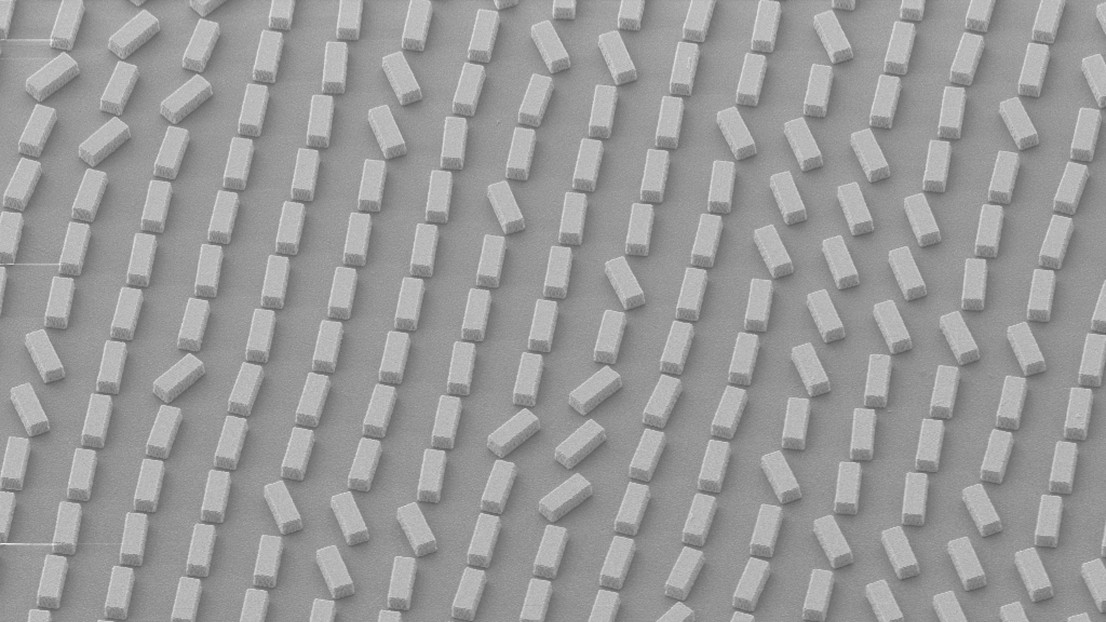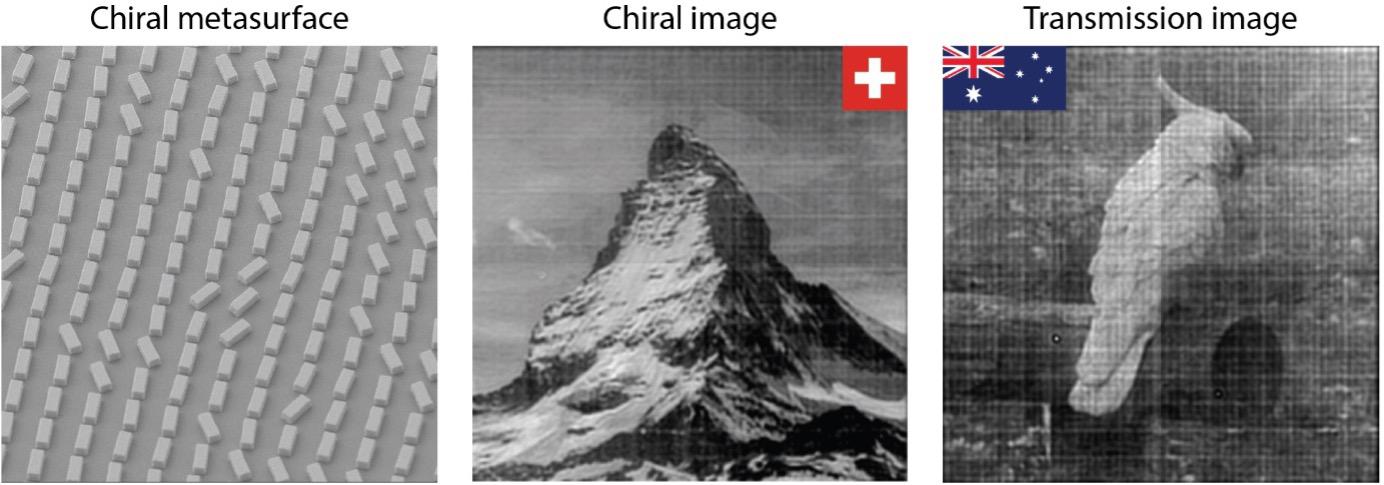
Meta-atoms at varying orientations on a chiral metasurface. 2025 EPFL Bionanophotonic Systems Lab CC BY SA 4.0
By leveraging the concept of chirality, or the difference of a shape from its mirror image, EPFL scientists have engineered an optical metasurface that controls light to yield a simple and versatile technique for secure encryption, sensing, and computing.
Imagine trying to wear a left-handed glove on your right hand: it doesn't fit because left and right hands are mirror images that can't be superimposed on each other. This 'handedness' is what scientists call chirality, and it plays a fundamental role in biology, chemistry, and materials science. Most DNA molecules and sugars are right-handed, while most amino acids are left-handed. Reversing a molecule's handedness can render a nutrient useless or a drug inactive and even harmful.
Light can also be left or right 'handed'. When a light beam is circularly polarized, its electric field corkscrews through space in either a left-handed or right-handed spiral. Because chiral structures interact differently with these two types of twisted light beams, shining a circularly polarized light on a sample - and comparing how much of each twist is absorbed, reflected, or delayed - lets scientists read out the sample's own handedness. However, this effect is extremely weak, which makes precise control of chirality an essential but challenging task.
Our 'chiral design toolkit' is elegantly simple, and yet more powerful than previous approaches.
Now, scientists from the Bionanophotonic Systems Laboratory in EPFL's School of Engineering have collaborated with those in Australia to create artificial optical structures called metasurfaces: 2D lattices composed of tiny elements (meta-atoms) that can easily tune their chiral properties. By varying the orientation of meta-atoms within a lattice, scientists can control the resulting metasurface's interaction with polarized light.
"Our 'chiral design toolkit' is elegantly simple, and yet more powerful than previous approaches, which tried to control light through very complex meta-atom geometries. Instead, we leverage the interplay between the shape of the meta-atom and the symmetry of the metasurface lattice," explains Bionanophotonics Lab head Hatice Altug.
The innovation, which has potential applications in data encryption, biosensing, and quantum technologies, has been published in Nature Communications.
An invisible, dual layer watermark
The team's metasurface, made of germanium and calcium difloride, presents a gradient of meta-atoms with orientations that vary continuously along a chip. The shape and angles of these meta-atoms, as well as the lattice symmetry, all work together to tune the response of the metasurface to polarized light.

In a proof-of-concept experiment, the scientists encoded two different images simultaneously on a metasurface optimized for the invisible mid-infrared range of the electromagnetic spectrum. For the first image of an Australian cockatoo, the image data were encoded in the size of the meta-atoms - which represented pixels - and decoded with unpolarized light. The second image was encoded using the orientation of the meta-atoms so that, when exposed to circularly polarized light, the metasurface revealed a picture of the iconic Swiss Matterhorn.
"This experiment showcased our technique's ability to produce a dual layer 'watermark' invisible to the human eye, paving the way for advanced anticounterfeiting, camouflage and security applications," says Bionanophotonics Systems Lab researcher Ivan Sinev.
Beyond encryption, the team's approach has potential applications for quantum technologies, many of which rely on polarized light to perform computations. The ability to map chiral responses across large surfaces could also streamline biosensing.
"We can use chiral metastructures like ours to sense, for example, drug composition or purity from small-volume samples. Nature is chiral, and the ability to distinguish between left- and right-handed molecules is essential, as it could make the difference between a medicine and a toxin," says Bionanophotonic Systems Lab researcher Felix Richter.






